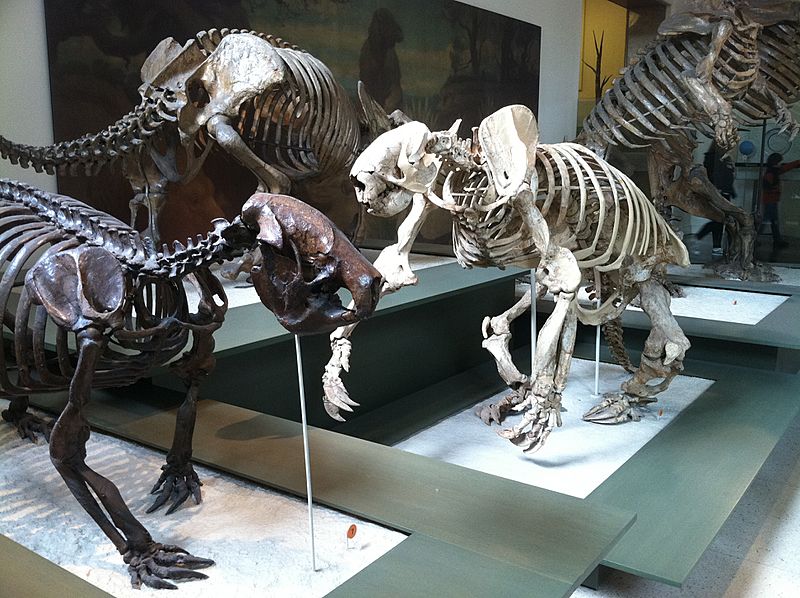Image: Ground sloths

Description: Foreground: Megalocnus rodens (left) from the Pleistocene of Cuba and Megalonyx wheatleyi (right) from the Pleistocene of the central and eastern US. Background: Scelidotherium cuvieri (left) and Glossotherium robustus (right) both from the Pleistocene of Argentina with Lestodon armatus behind it (you can see its ribcage), also from the Pleistocene of Argentina and a few surrounding nations. In the The Hall of Primitive Mammals at the American Museum of Natural History in New York. I like this exhibit. It demonstrates the huge diversity of giant ground sloths in the Pleistocene (2.58 mya to ~11,000 years ago), with highly divergent morphologies and life styles all across the New World. At the end of the Pleistocene however, humans invaded North and South America and everything changed. Suddenly, all ground sloths went extinct. Except of course, Megalocnus rodens of Cuba in the Caribbean, where they remained at least until around ~4,000 years ago. The first known human arrivals onto the island were around 5,000 years ago, long after the colonization of the mainland continents. For some reason these specimens were mounted in the Hall of Primitive Mammals (probably due to a lack of space in the Hall of Advanced Mammals, but it might also be due to the fact that they're xenarthrans, long thought of as basal placentals, although modern molecular data has challenged this view), but this is deceiving. If it were not for the environmental havoc and subsequent mass extinction at the end of the last ice age that humans almost certainly exacerbated, all of these massive beasts would be considered highly advanced megaherbivores of the modern realm.
Title: Ground sloths
Credit: Giant ground sloths Megalocnus rodens and Megalonyx wheatleyi at the American Museum of Natural History Uploaded by FunkMonk
Author: Dallas Krentzel
Usage Terms: Creative Commons Attribution 2.0
License: CC BY 2.0
License Link: http://creativecommons.org/licenses/by/2.0
Attribution Required?: Yes
Image usage
The following page links to this image:

